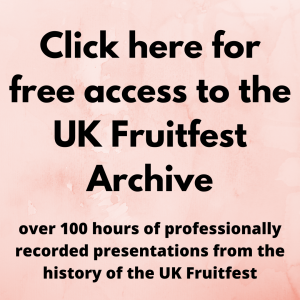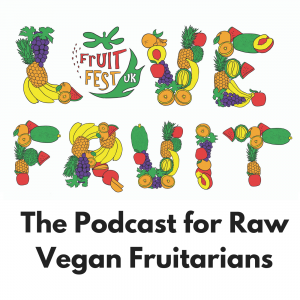7 Top Hotspots For Durian Lovers by Lindsay Gasik (YearOfTheDurian.com)
by Ronnie Smith
@Durianwriter’s 7 Top Hotspots For Durian Lovers
written by Lindsay Gasik
In 2012 I went durian hunting. I had recently learned that it was possible to eat durian all year long in Southeast Asia if you were willing to jump countries every month or so to stay in the durian season. I mapped out the season, planned my trip, and created an itinerary for what I thought would be one year of durian feasting.
That’s why I eventually called my blog Year of the Durian.
Now, of course, it’s been seven years of durian. My blog has grown, and now I’m essentially a Durian Travel Agent. I run a small tour company helping durian lovers like you travel to eat the very best durians and exotic wild fruits while having a smooth, comfortable, amazing adventure in Southeast Asia.
These are a seven of my favorite places to durian hunt that you should add to your durian dreams and travel bucket list.

- Limbang, Malaysian Borneo
Limbang is a old logging town along a sleepy brown river in central-western Borneo, just along the border with Brunei. The town itself once had a raunchy reputation — historically, miners and loggers coming back from the jungles needed somewhere to have fun — but the town has quieted down in the last few decades into a few square blocks of Chinese shophouses and a massive, sprawling fruits and vegetable market known as the pasar tamu.
The town’s proximity to virgin rainforest means that native people still bring an exciting diversity of jungle produce into town. Here you’ll find giant brown Panjang mangoes the size of a coconut, fatty and savory tropical olives known as Dabai, jungle ferns, cempedaks and cempejaks, and durian piled in abundance all over the city.

The durian diversity here is vast, with a number of different species including Durian Isu Oren (Orange-fleshed Durio graveolens), Durian pulo (Durio kutjensis), Durian kura kura (Durio testudinarum), Seong Kong (Durio zibethinus x graveolens hybrid), Durian Api (Durio dulcis)

When to go: January
Where to stay: Prime Hotel or Purnama Hotel
How to get there: Take a bus from Brunei or fly into Limbang from Miri. For more information, see my blog posts:

- Wonosobo, Java Indonesia
The chilly, scenic Dieng Plateau smokes with volcanic activity. Gorgeous, lush green cones erupt from hillsides blanketed in cassava, potato and an odd kind of mountain papaya, and the sky at this high elevation is blue-blue-blue. Somehow, there are very few tourists but lots of durian. It’s a hidden durian feasting gemstone.

The biggest city is Wonosobo, which sits a little too high for durian, but that’s where you’ll have to stay if you want to visit the durian villages just downhill. These villages nestle against durian forests, where trees over 100 years old drop durians with a particularly sticky texture and smooth, bitter flavor.
Each durian tree here has its own name and renown. Look out for Delly, Merica, Beruk, Getuk, and Durian Lenger, which won a national contest in 2015.

When to go: February or March
Where to stay: Griya Krakatau Homestay, Kresna Hotel or an Airbnb
How to get there: Take a bus or hire a car from Yogyakarta, Java. It’s a four hour drive.
For more information, see my blog posts:

- Chanthaburi, Thailand
Chanthaburi is the most famous durian destination on the planet thanks to an annual durian festival every May. The Chanthaburi Durian Festival itself is fairly disappointing for durian lovers, but that shouldn’t rub you the wrong way about Chanthaburi itself. The riverfront city has an eclectic, historic charm to it, and during the peak season there is durian everywhere.

Chanthaburi is the industrial heartland of durian, exporting durian all over the world. The frozen durian you buy in your home grocery probably came from Chanthaburi. About 90% of durian grown here belongs to a single variety — Monthong — so if you’re not looking, you might decide Chanthaburi is boring. Look harder.
Chanthaburi is also the heartland of durian diversity in Thailand. If you’re willing to hunt a little, you’ll find a number of Thailand’s 234 durian varieties hiding in the morning markets and small family farms. Look for Puangmanee, a brilliantly orange fleshed little durian, as well as it’s cousin Nuanthongchan, a new orangey hybrid between Puangmanee and Monthong, and Nockrachip, Tubtim, Kop Lep Yiao, Thong Yoi Chat.

When to go: Late April through early June
Where to stay: There’s a lot of options for accommodation in Chanthaburi, but in the city itself I recommend staying along the riverfront at Kasemsarn or Laluluna Riverhouse, across the river near the Cathedral and the winding canal paths at Banchan 9 Homestay, or near the Robinson Department Store at KP Grand. Grant Campbell also organizes annual raw food and health retreats here. Check them out on his website.
How to get there: Take a bus from Bangkok’s Ekkamai Station. It’s a 4-5 hour drive depending on traffic and costs around 200 baht. A taxi from the Suvarnhabumi airport is around 5,000 baht.
For more information, see my blog posts:

- Penang, Malaysia
Penang is the Mecca of the durian world. It draws starved pilgrims from around the globe every season to half-worship the sweet, the bitter, the floral, the stuck-in-your-throat creaminess of the succulent fruits that grow on the island’s steep hillsides.
Located in the northwestern corner of Malaysia, Penang Island was an important trading port in the 17th and 18th centuries and was settled by Indian, Chinese, British and Muslim traders who created a diverse melting pot of culture and cuisine. The island is a culinary hub, the hunting ground of food bloggers and weekend food warriors, and its durian culture is highly developed, snobbish, and focused on freshness, quality, and overall excellence.

Since the island is so small, the best way to experience Penang’s high quality durian is to visit a small farm, have the farmer pick out a durian tasting flight for you, and enjoy the views from the mountain. You can also stay overnight at a farmstay so you can pick up fresh durian as it falls. Top varieties in Penang include Red Prawn, Hor Lor, Kun Poh, Green Skin 15, Kapri, and — if you’re brave enough to dare the mainland side — Black Thorn and D101.

When to go: Late May through early July
Where to stay: There’s a lot of options for accommodation in George Town. Good mid-range options include Kim Haus, 1926 Heritage Hotel, Tido Hostel, Cintra Heritage Hotel, but if you’re durian hunting you might as well go stay at a durian farmstay, like Green Acres Penang or Nature Fruit Farm Resort.
How to get there: Penang has a well-connected international airport with cheap flights on Air Asia. It’s usually worth flying versus taking a bus. Direct flights from Kuala Lumpur take about 45 minutes.
For more information, see my new book, The Durian Tourist’s Guide to Penang.
Or read some blog posts:
- Ultimate George Town Durian Stall Guide
- 3 Places to Buy Durian in Batu Ferringhi
- 5 Places to Buy Durian All Year in Penang

- Bentong, Malaysia
Nestled in the foggy hills just east of Kuala Lumpur, Bentong is renown for its sticky and smooth highland durians. It’s just a short one-hour drive from the big city, and is a popular with motorcyclists and bicyclists who take the winding scenic highway for a Saturday jaunt to visit the famous morning market and hit up a few durian farms.
There are a number of durian stalls in the downtown area, as well as a full-time durian shop with all kinds of durian ice creams and chips and other durian goodies, but most people will head directly out to the farms to eat the durians at their freshest. It’s best to have either your own transportation or stay at one of the two farmstays that offer accommodation.
Here you’ll find a plethora of Malaysia’s #1 export durian, Musang King, but the Bentong area really specializes in three pale, creamy, and fleshy durian: D24, Tekkah, and D88. Tekkahs yellow-ivory flesh is the most herbal and bitter, while D88 is tinged with pink and is the milkiest.

When to go: late June through early August
Where to stay: The downtown area has a number of cheap hotels, the best of which is (in my opinion) EV World, or Golden Peak Inn just outside of the downtown area. A better option is Airbnb up on the hill, owned by a durian farmer. Both Jimmy’s Farm and the Watergate Villa have durian orchards on the property.

For more information, see my blog posts:

- Davao, Philippines
Davao is perhaps the best bang for your durian buck. During the peak season, the city and surrounding areas drown in durian, and you can find all the most popular Malaysian and Thai varieties — D101, Red Prawn, Musang King, D24, Chanee, Kradumthong, Monthong, Ganyao — hidden in the stacks of some of the city’s best sit-down durian restaurants and farms.
Davao City is located on the southernmost island of the Philippines, Mindanao. The city itself is enormous and crowded, with more than 1.5 million inhabitants. Traffic is chaotic, the old army jeeps roaming the streets emit black smoke, and the heat is intense — but Davaoeños
literally walk around singing. The people, the cheap prices, and the durian make Davao a hotspot for vegans and fruitarians, who center around a very chic cafe called the Vegan Dinosaur for the annual fruit season and vegan-fruit festival, the Madayaw Fruit Festival.

The durian drawback with Davao is that the durian quality really ranges a lot. The cheapest stuff is almost inedible; picked early, loaded with chemicals and kept around until overripe and sour. It’s best to go to a reputable farmstand or durian stall, or head out into the countryside to explore the farms and roadside stalls where the durian is freshest.

When to go: August and September, during the Madayaw Fruit Festival
Where to stay: The Evergreen is the closest budget option to the Magsaysay Durian Park, but the area is pretty trafficky and chaotic so you might consider upgrading to the Pinnacle Hotel nearby. To get out of the thick of the city head to Times Beach and Marton Suites Hotel, within walking distance of the SM City Mall and Bernard’s Stall (where you can get Red-fleshed Durio graveolens).
Can’t stand the city? Head to Calinan or Kidapawan for the Kalivungan Festival.
How to get there: Kuala Lumpur now has a direct flight to Davao City. Otherwise you have to connect through either Cebu or Manila — probably my most hated airport (the Cebu airport is great).
For more information, see my blog posts:
- Philippines Durian Varieties List
- Thornless Durian at SM Lanang
- Rosario’s Durian Restaurant in Bankerohan

- Kota Kinabalu, Sabah, Malaysian Borneo (November)
Kota Kinabalu, or KK, is the laidback capital of Sabah, the northern Malaysian state on the island of Borneo. It’s a beach city, with a pale-sand beaches, sparkling islands just off shore, and a long central market along the waterfront loaded with goodies from the jungle.

Sabah is one of the cleanest and quietest places to visit in Malaysia. It’s a hotspot for nature lovers, who visit to climb Mount Kinabalu and see orangutans, elephants, proboscis monkeys, and other animals in the wild. There’s also an insane number of wild fruits and wild durians in Sabah. As the largest city, with the largest markets, Kota Kinabalu is one of the easiest places to get your hands on exotic jungle durians.

During the right season, you can easily find durians with dark red flesh, pink flesh, deep orange flesh, candy-yellow flesh, or the normal off-white-yellow. The bright red fleshed durian, although attractive, has little flavor and is likely to disappoint you — but it’s still amazing to try! Instead look for Durio oxleyanus, with it’s crazy curling green spikes and condensed milk coffee flavor, Durio kinabaluensis with it’s cherry liqueur pop, and the bright orange Dalit, Durio graveolens, as sticky and nutty as almond butter.
When to go: November and December
Where to stay: My preferred place to stay is just outside the city, within walking distance of the airport and the beach. The Dock In is a good budget spot, however you’ll need to take a taxi or bus to get to the market. For easier access to the markets and Durian Street, try Space Cap or La Viva.
How to get there: Kuala Lumpur has direct flights to Kota Kinabalu for low prices.
For more information, see my blog posts:
- Kota kinabalu Durian Street
- Pink Durian at Kota Kinabalu’s Central Market
- Ranau Durian Market
- Sipitang Durian Lover’s Guide

Lindsay is the durian obsessive behind the travel website, Year of the Durian. She’s based in Southeast Asia and travel incessantly hunting durian and creating maps, blog posts, and other resources for other durian hunters so they can easily get some really tasty durian.
@Durianwriter’s 7 Top Hotspots For Durian Lovers written by Lindsay Gasik In 2012 I went durian hunting. I had recently learned that it was possible to eat durian all year long in Southeast Asia if you were willing to jump countries every month or so to stay in the durian season. I mapped out the…






